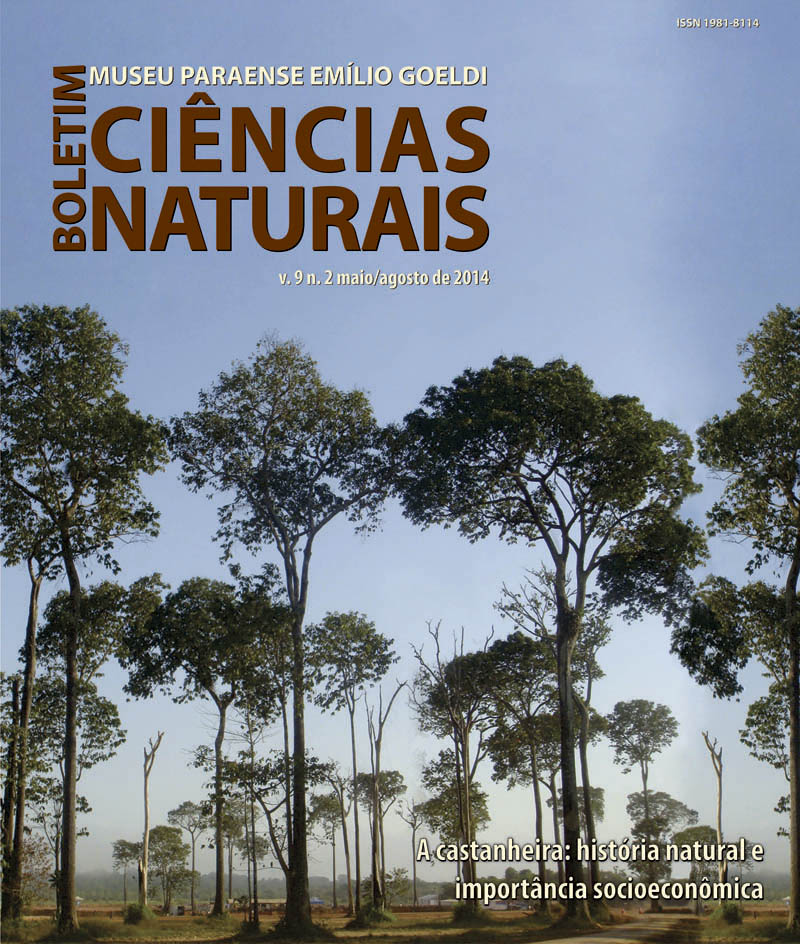Population structure of managed Brazil nut trees (Bertholletia excelsa) in the Caxiuanã National Forest, Pará
DOI:
https://doi.org/10.46357/bcnaturais.v9i2.530Keywords:
Population ecology, Demography, ExtractivismAbstract
This paper presents assessment of the abundance and population structure of the Brazil nut, Bertholletia excelsa, in primary and secondary forests in the Caxiuanã National Forest reserve in the state of Pará, Brazil. A total of 121 individuals saplings, (DBH < 10 cm), juveniles (10 cm ≤ DBH < 50 cm) and adults (≥ 50 cm DBH), were inventoried. Notable results included (1) a very high density of juveniles and adults with some 25 + 14.3 individuals ha-1; (2) the distribution of sampled individuals was regular; (3) the population is assumed to be in dynamic equilibrium with an inverted J-shaped distribution; (4) 54.5% of the total inventoried Brazil nuts are saplings or juveniles, which were very abundant in areas of secondary forests, indicating that the species can benefit from human disturbance; (5) the use of fire for the cleaning of the understory to facilitate the collection of Brazil nut fruits, as well as the establishment of the ‘slash-and-burn’ agriculture can facilitate self-regeneration while also contributing to the frequent bifurcation observed in Brazil nut tree stems in the Caxiuanã National Forest.
Downloads
Published
Issue
Section
License
Publication means fully assigning and transferring all copyrights of the manuscript to the journal. The Liability Statement and
Assignment of Copyrights will be enclosed with the notice of acceptance. All the authors must sign the document and return it to the journal.








